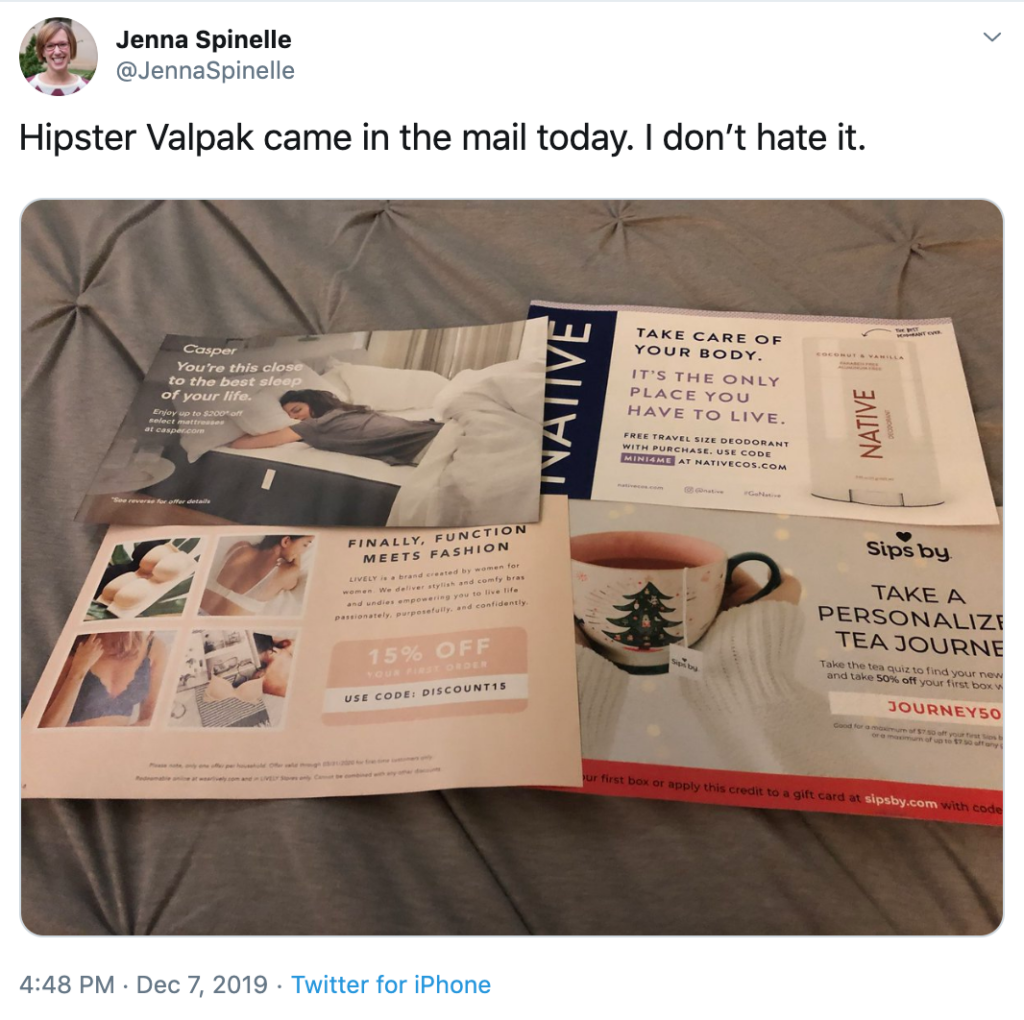Back in the ‘70s it used to be called “junk mail” – the reams of unsolicited paper in your mailbox, sent by well-meaning but data-limited businesses trying to cover a broad swath. Never mind that yours was a vegetarian household; that postcard from the local steakhouse was heading your way regardless.
The “junk” moved online over the last several years, as marketers got better about targeting, but used such an aggressive approach with retargeting that consumers were rightly spooked.
Now, the tide is turning back to sanity, as marketers take a favored medium – direct mail – and combine it with sensible and judicious use of data targeting.
“We have digital devices around us all the time, but we also get fatigued,” said Anu Verma, vice president of marketing at Care/of, a subscription vitamin company that uses mailers to find new customers. “That moment of checking the mail … that’s a nice sensation. There’s something relaxing, even entertaining about it.”
Verma was quoted in this piece in the Washington Post by Heather Kelly, who explains the shift to more personalized direct mail.
“Google, Facebook and Amazon have helped create the massive online advertising industry — which was projected to reach $129.34 billion in 2019 — where troves of personal data can be used to show specific people ads based on their likely interests,” Kelly writes. “But after years of diverting money away from print and TV ads to the Internet, brands have started branching out.
“What that means for regular people is they might notice a flier in their mail for a company they were just visiting online days before. PebblePost uses a brand’s data about people who have gone to its website, and helps the company contact them with shared or single mailers,” Kelly continues. “Each company is usually already collecting a ton of data about what visitors are up to: dwell time, how fast or slow they scrolled through a page, if they clicked through on specific products, and whether they put something in their shopping cart but didn’t complete a purchase.”
Consumers seem to like it, one saying she feels “seen” after receiving direct mail pieces from brands she was interested in online. One Twitter user gives what may be the ultimate Millennial kudo:
The challenge for marketers is balance. Nobody is advocating a return to the oversaturated mailboxes of the last decade, where direct mail was viewed with the same kind of contempt being heaved at spam email today. It’s only “junk” if it’s not relevant to the user … and this is where today’s brands are getting very savvy about understanding what the customer might like to see next.
“It’s been a growing part of our marketing approach, and the targeting has become increasingly better,” said Hanna Russin, Embark’s head of marketing. “The reaction to a direct mail piece is to glance at the front, turn it around and look at the back. It is in some ways a different interaction [than online ads].”
There’s a caveat of course – while we want to feel “seen” by brands, we do not want to feel like they are peering over our shoulders.
“PebblePost’s [CEO Lewis} Gersh hopes to avoid the online creepy factor by only contacting people who have visited the client’s site, and with tricks like not sending overly specific mailers,” Kelly writes. “For example, if someone was looking at a pair of leopard print knee-high boots online, PebblePost would not recommend sending a photo of leopard print knee-high boots to the recipient.”
While intellectually we know “they” know what we view online, blatant reminders like this are a big turnoff. But a discount coupon on their entire boot line? That might be perfect.
The bottom line is brands have massive piles of data collected online. And consumers have said loud and clear “stop harassing me with it.” Now, brands are being smarter by employing a medium that feels more like a welcome gift than an intrusion.
The key is keeping it that way.

